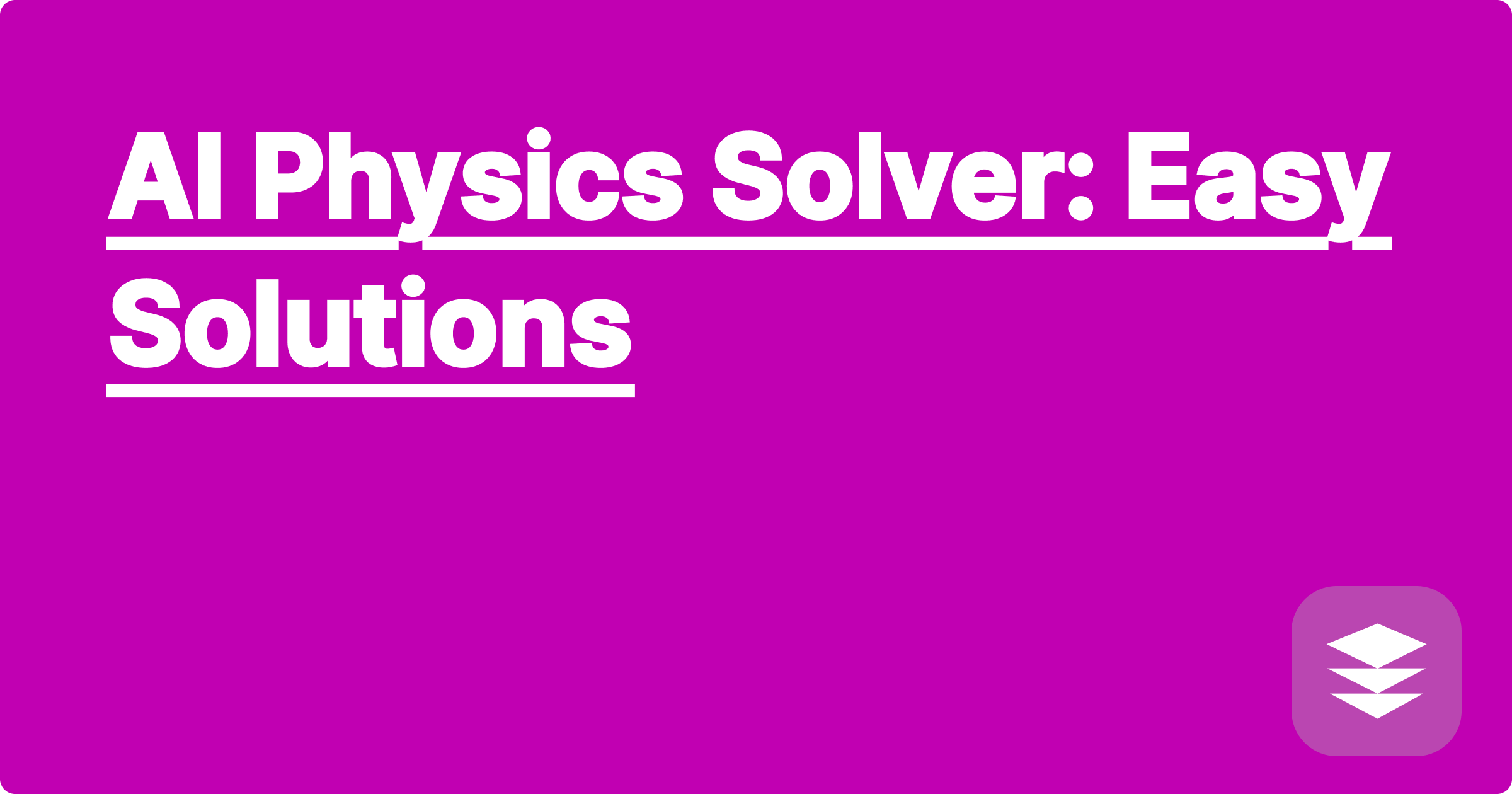
STEM fields often present complex challenges, particularly within physics, where intricate problems can demand significant time and effort to solve. Fortunately, advancements in artificial intelligence are providing new avenues for tackling these challenges, offering powerful tools that can streamline problem-solving and enhance understanding. These AI-powered solutions are transforming the learning and research landscape, providing students and researchers with accessible and efficient methods for navigating complex physics concepts.
For STEM students, especially those grappling with the intricacies of physics, these AI tools offer a significant advantage. They can help break down complex problems into manageable steps, provide alternative solution paths, and offer immediate feedback, ultimately leading to a deeper understanding of the underlying principles. Researchers can leverage these tools to accelerate their work, explore new hypotheses, and process vast datasets, pushing the boundaries of scientific discovery.
Physics problems, especially at the university level, often involve multiple concepts and require a structured approach. Students frequently encounter difficulties translating word problems into mathematical equations, applying the correct formulas, and visualizing the physical scenarios. Furthermore, debugging errors in complex calculations can be a tedious and frustrating process. A common stumbling block involves applying concepts like Newton's laws of motion, conservation of energy, or electromagnetism to real-world scenarios. For example, analyzing the trajectory of a projectile under the influence of gravity and air resistance requires understanding vector components, differential equations, and numerical methods. Similarly, understanding the behavior of circuits with multiple components necessitates applying Kirchhoff's laws and solving systems of equations. These challenges can often lead to frustration and hinder a student's progress in mastering the subject.
AI tools like ChatGPT, Claude, and Wolfram Alpha offer powerful capabilities for solving physics problems. These tools can interpret natural language queries, generate step-by-step solutions, and even provide visualizations. ChatGPT and Claude excel at explaining concepts and guiding users through the problem-solving process, while Wolfram Alpha is particularly adept at handling complex calculations and symbolic manipulations. By combining these tools, students can gain a comprehensive understanding of the problem and its solution. It's important to remember that these tools should be used as learning aids, not as replacements for critical thinking and problem-solving skills. They are meant to augment, not substitute, the learning process.
To use these AI tools effectively, begin by clearly defining the problem. Express the problem in natural language, including all relevant information such as given values, unknowns, and any constraints. For example, you might ask, "A ball is thrown upwards with an initial velocity of 20 m/s. What is the maximum height it reaches?" Next, choose the appropriate AI tool. For conceptual understanding and step-by-step guidance, ChatGPT or Claude are excellent choices. For complex calculations or symbolic manipulations, Wolfram Alpha is often more suitable. Input the problem statement into the chosen tool and carefully examine the generated output. Pay attention to the steps involved, the formulas used, and the final answer. If the solution isn't clear, rephrase the problem or ask clarifying questions to the AI. Finally, verify the solution against your own understanding of the underlying physics principles. This step is crucial for ensuring that you are learning from the process and not simply relying on the AI for answers.
Consider the problem of calculating the gravitational force between two objects. You can input the following into Wolfram Alpha: "gravitational force between two objects, m1 = 10 kg, m2 = 5 kg, distance = 2 m". Wolfram Alpha will then output the force, calculated using the formula F = G m1 m2 / r^2, where G is the gravitational constant. Another example could be analyzing a simple pendulum's motion. You can ask ChatGPT or Claude: "Explain the forces acting on a simple pendulum and derive the equation for its period". The AI will then explain the forces involved (gravity and tension) and guide you through the derivation of the period formula, T = 2π * sqrt(L/g), where L is the length of the pendulum and g is the acceleration due to gravity. These examples demonstrate the versatility of AI tools in solving a wide range of physics problems.
To maximize the benefits of AI in your STEM education and research, focus on understanding the underlying concepts rather than simply obtaining answers. Use the AI tools to break down complex problems into smaller, manageable steps. Experiment with different phrasing and approaches to gain a deeper understanding of the problem. Don't hesitate to ask clarifying questions to the AI and compare the results with your own understanding. Furthermore, actively engage in discussions with your peers and instructors, using the AI-generated solutions as a starting point for deeper exploration. By integrating these tools into your learning process thoughtfully and strategically, you can significantly enhance your understanding of physics and achieve academic success.
In conclusion, AI tools like ChatGPT, Claude, and Wolfram Alpha offer powerful resources for STEM students and researchers. By understanding their strengths and limitations, and by using them strategically, you can overcome challenging physics problems, deepen your understanding of fundamental concepts, and accelerate your research. Embrace these tools as valuable learning aids and explore their potential to unlock new avenues of scientific discovery. Don't be afraid to experiment and integrate these tools into your workflow to enhance your academic and research pursuits.
AI Homework Help: STEM Made Easy
Ace STEM Exams: AI Study Guide
AI for Lab Reports: Data Analysis
AI: Your Coding Homework Helper
AI Flashcards: Master STEM Concepts
AI Simulation: Engineering Projects
AI Math Solver: Conquer Calculus